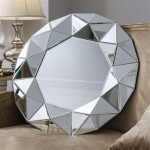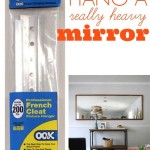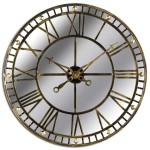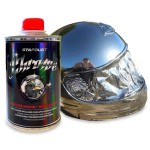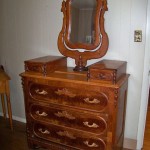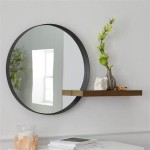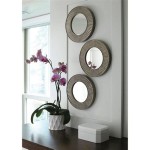Bathroom Shower Mirrors: A Comprehensive Guide
Bathroom shower mirrors are a practical and stylish addition to any bathroom. They provide a convenient surface for shaving, applying makeup, or simply checking one's appearance while showering. This article will explore the various aspects of bathroom shower mirrors, from the different types available to installation and maintenance.
Types of Bathroom Shower Mirrors
Several types of shower mirrors cater to diverse needs and preferences. Understanding these differences can help consumers make informed decisions.
- Fogless Mirrors: These mirrors incorporate a special coating or internal heating element to prevent fogging, ensuring clear visibility even during hot showers.
- Fixed Mirrors: These are permanently attached to the shower wall, providing a stable and reliable reflecting surface.
- Swivel Mirrors: Offering greater flexibility, swivel mirrors can be adjusted to different angles, accommodating users of varying heights and preferences.
- Extension Mirrors: These mirrors typically feature an extending arm, allowing them to be pulled closer for detailed tasks like shaving or applying makeup.
- LED Lighted Mirrors: Integrating LED lights, these mirrors offer enhanced visibility and a modern aesthetic.
- Magnifying Mirrors: These mirrors provide a magnified reflection, facilitating close-up tasks such as tweezing or applying eyeliner.
Materials and Construction
Shower mirrors are constructed from various materials, each with its own advantages and disadvantages. Carefully considering these materials is crucial for longevity and performance.
- Glass: Traditional glass mirrors are common due to their clarity and affordability. However, they are more susceptible to breakage.
- Acrylic: Acrylic mirrors are lighter and more shatter-resistant than glass, making them a safer option, especially for households with children. However, they may be more prone to scratching.
- Stainless Steel: Stainless steel frames offer durability and resistance to rust and corrosion, ensuring the mirror remains functional and aesthetically pleasing in the humid shower environment.
- Plastic: Plastic frames are a lightweight and cost-effective option, but they may not be as durable as metal frames.
Installation Methods
Proper installation is critical for the safety and functionality of the shower mirror. Different methods cater to various wall types and mirror designs.
- Adhesive Mounting: This method uses strong adhesive to attach the mirror directly to the shower wall. It's suitable for lighter mirrors and smooth surfaces.
- Screw Mounting: This involves drilling holes into the wall and securing the mirror with screws. It provides a more secure hold for heavier mirrors.
- Suction Cup Mounting: This method uses suction cups to attach the mirror to the wall. It's a less permanent option suitable for renters or those who prefer flexibility.
Choosing the Right Shower Mirror
Selecting the appropriate shower mirror involves considering several factors to ensure it meets individual needs and bathroom aesthetics.
- Size and Shape: Consider the available space in the shower and choose a size and shape that fits comfortably without obstructing movement.
- Functionality: Determine the desired features, such as fog resistance, magnification, or LED lighting, based on individual needs and preferences.
- Style and Design: Select a mirror that complements the overall bathroom decor and personal style.
- Budget: Shower mirrors are available at various price points, allowing consumers to find options that fit their budget.
Maintenance and Care
Proper maintenance ensures the longevity and optimal performance of the bathroom shower mirror.
- Regular Cleaning: Clean the mirror regularly with a mild soap and water solution or a dedicated glass cleaner to remove soap scum, water spots, and other residue.
- Avoid Harsh Chemicals: Refrain from using abrasive cleaners or chemicals that can damage the mirror's surface or coating.
- Proper Ventilation: Ensure adequate ventilation in the bathroom to minimize moisture buildup, which can contribute to fogging and mildew growth.
Placement and Positioning
Strategic placement of the shower mirror enhances its usability and contributes to a comfortable shower experience.
- Eye Level: Install the mirror at a comfortable eye level for easy viewing while showering.
- Accessibility: Ensure the mirror is easily accessible and within reach while showering.
- Lighting: Consider the lighting in the shower and position the mirror to maximize visibility.
Benefits of Using a Shower Mirror
Incorporating a shower mirror offers numerous practical advantages.
- Convenient Shaving: Provides a clear and convenient surface for shaving in the shower.
- Improved Hygiene: Facilitates better cleansing and skincare routines in the shower.
- Enhanced Functionality: Adds versatility to the shower space, allowing for multiple grooming tasks.
Safety Considerations
Prioritizing safety is paramount when installing and using a shower mirror.
- Secure Installation: Ensure the mirror is securely mounted to prevent it from falling and causing injury.
- Shatterproof Options: Consider using shatterproof mirrors, especially in households with children or elderly individuals.
- Proper Handling: Handle the mirror with care to avoid dropping or damaging it.

Aqua Fog Free Mirror Electric Lighting Company

Acclaim Fog Free Mirror Electric Lighting Company

Clearmirror Luxury Heated Mirrors Shelves

Aqua Fog Free Mirror Electric Lighting Company

Acclaim Fog Free Mirror Electric Lighting Company

Hospitality Fog Free Mirrors Electric Mirror

Clear Shower Mirrors Won T Fog Up

Fantastically Clear Shower Mirrors Fogless Bathroom Mirror

Warmzone Home Heating Amenities Heated Mist Free Shower Mirrors

5 Best Fogless Shower Mirrors Of 2024 Reviewed

